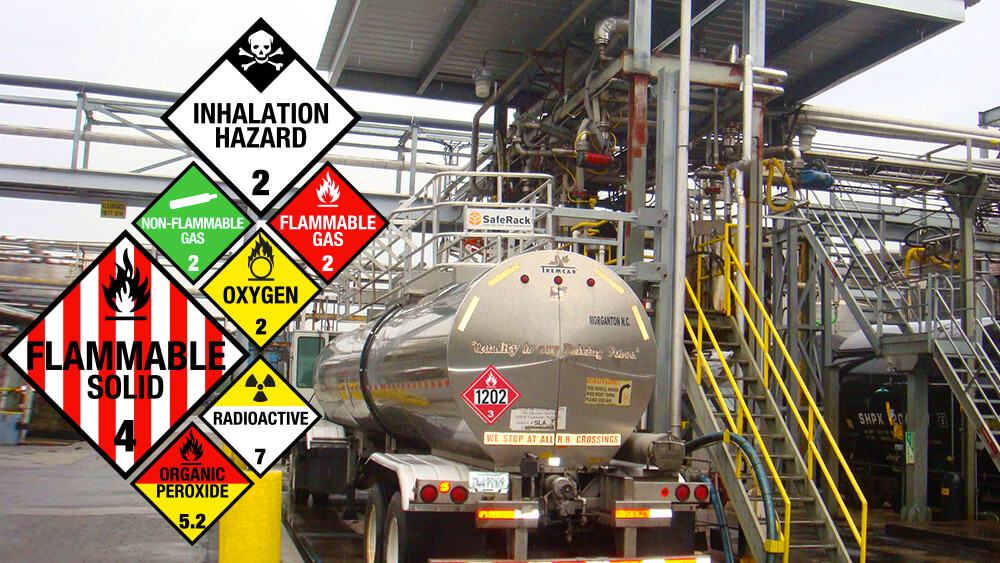CLASSIFICATION OF HAZARDOUS SUBSTANCES
CLASSIFICATION OF
HAZARDOUS SUBSTANCES
Categories of Danger
There are 3 general classifications of hazards, each of which
contains a number of such categories:
·
Physico-chemical hazards – those that are caused by the intrinsic
physical or chemical
properties of the substance.
·
Toxicological hazards – those that arise from a chemical causing harmful effects to
living organisms, which in practice normally means death, injury or adverse
effects in humans when ingested, inhaled or absorbed through the skin. Toxic
effects may be acute or chronic, local or systemic, and reversible or
irreversible.
·
Environmental Impacts – those that relate to the potential of a chemical to damage 1 or
more environmental compartments (i.e. the air, soil or water, including
groundwater).
The categories of danger within each
classification are shown in the following table
Classification of Hazardous
Substances
|
Physico-Chemical |
Toxicological |
Environmental |
|
Explosive Oxidizing Extremely flammable Highly flammable Flammable
|
Very toxic Toxic Harmful Corrosive Irritant Sensitizing Carcinogenic Mutagenic Toxic for
reproduction
|
Toxic or harmful to
aquatic organisms Long-term effects
such as persistence Toxic to the
non-aquatic environment Dangerous for the
ozone layer |
The definitions of the categories of
danger posed by chemicals within the general toxicology
classification are set out below.
·
Very Toxic: Very toxic substances and preparations are those that in very low
quantities cause death or acute or chronic damage to health when inhaled,
swallowed or absorbed via the skin.
·
Toxic: Toxic substances and preparations are those that in low quantities
cause death or acute or chronic damage to health when inhaled, swallowed or
absorbed via the skin.
·
Harmful: Harmful substances and preparations are any that may cause death
or acute or chronic damage to health when inhaled, swallowed or absorbed
through the skin.
·
Corrosive: Corrosive substances and preparations are those that may on
contact destroy living tissues. The following examples of corrosive substances
may be encountered in the course of construction work:
·
Acids – Sulphuric acid and hydrochloric acid in chemical cleaners, e.g.
for masonry, brickwork.
·
Alkalis – cement, lime or agents used as chemical cleaners.
·
Gases and vapors – hydrogen sulphide.
·
Vapours – from resins, paints and thinners.
·
Irritant: These are non-corrosive substances and preparations which through immediate,
prolonged or repeated contact with the skin or mucous membrane may cause
inflammation.
·
Sensitizing: These are substances and preparations that may cause an allergic
reaction.
·
Carcinogenic: Carcinogenic substances and preparations are those which, if
inhaled or ingested or absorbed by the skin, may induce cancer or increase its
incidence.
Note that, in classifying a particular
chemical, the hazards it presents may lie within any or all of the general classifications
and more than 1 class of danger may be identified. Thus, nitric acid is
classified as both oxidising and corrosive, and asbestos is classified as a
carcinogen (Category 1) and toxic.
Distinction Between
Acute and Chronic Health Effects
Acute health effects arise where the
quantity of a toxic or harmful substance absorbed into the body produces
harmful effects very quickly – i.e. within seconds, minutes or hours.
In an occupational setting, acute toxicity
does not often occur because the conditions required to produce it are either
too complicated, or the results would be so serious that stringent safety measures
are observed, thus preventing its occurrence. Gassing accidents producing toxic
conditions are an exception.
The term ’chronic toxicity’ describes a
condition where the harmful effects of a substance absorbed into the body take
a very long time to appear – months or perhaps years. The conditions
produced by the toxin usually result from absorption of small quantities over a
period of time. In terms of occupational safety, chronic toxicity, or at least
its prevention, presents the most difficult control problems.
This is particularly true if materials
have little-known or poorly-documented toxicity levels, or if hygiene control
strategies are breaking down. The following points illustrate how insidious are
the effects of chronic toxicity and give an indication of the difficulties of
achieving effective control:
.
- The level of contamination required to produce chronic effects is
often tolerated by people because they do not experience acute symptoms.
- ·
Symptoms occur slowly, so they are not recognised until an
advanced condition of harm has developed.
- ·
When symptoms are recognised, the harm may be too advanced for
full recovery – sometimes no recovery is possible.
- ·
Symptoms are often confused with ‘normal’ ill-health or with
‘getting older’.
- · Symptoms are not always easily identifiable in groups of people with the same exposure, owing to the effect of differing ‘personal’ metabolisms.
It is important to note that for both
acute and chronic toxicity, time is involved in relation to their definition,
but that the level of toxic action is not defined. Acute toxic
action does not necessarily mean death. Intoxication from drinking alcohol is
an acute toxic condition, but only in rare cases is it the direct cause of
death. Cirrhosis of the liver related to intoxication by alcohol is a chronic
toxicity condition from which death can occur. Some toxic substances, such as
cyanide and paraquat, are generally considered to be acute toxins only
